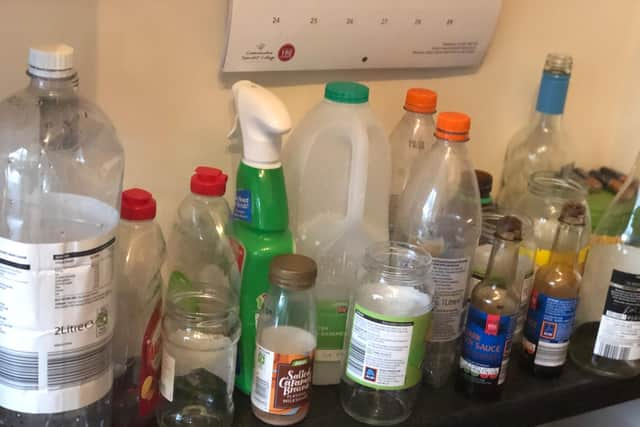Fun science experiment to keep kids entertained and teach them about the environment
and live on Freeview channel 276
You will need: Clear and clean jars or containers. Water collected from a garden pond or your fish tank. Things you want to test (e.g. newspaper, loo roll, plastic bottle).
Step One: You need one jar for each test material you want to test.
Advertisement
Hide AdAdvertisement
Hide AdFill each jar two thirds of the way up with water from a garden pond or fish tank.


Step Two: To make the test fair everything needs to be the same for each test material you use.
You need a small piece of each test material you are testing so cut a shape out of it and make sure they are about the same size and shape (roughly 50p coin size).
Step Three: Only one test material goes in each jar.
If things break down quickly, you might forget what each jar has in so make sure you label the jar!
Step Four: Don’t seal the jar.
Advertisement
Hide AdAdvertisement
Hide AdIf you cover it or use a lid, make sure you put holes in to let the air in.
Step Five: Check the jars every day and give them a good stir.
Describe what you see or take a photograph.
Is the test material the same shape, size, and colour?
What has happened to the water? Is it still clear? Can you see any tiny bubbles?
Step Six: Things break down quicker in a warm place (but not too hot!) so you might want to keep the jars somewhere warm to see quicker results.
Advertisement
Hide AdAdvertisement
Hide AdWhen something breaks down in water which has oxygen in, it is usually bacteria in the water which break it down.
You might be worried that this carbon dioxide is bad for the environment because it is a greenhouse gas.
That’s true, but in a healthy pond there are plant cells called algae which need the carbon dioxide to grow and when they use the carbon dioxide they produce oxygen.
This is why it is so important for us to have healthy ponds and rivers, to keep the balance of carbon dioxide and oxygen just right.